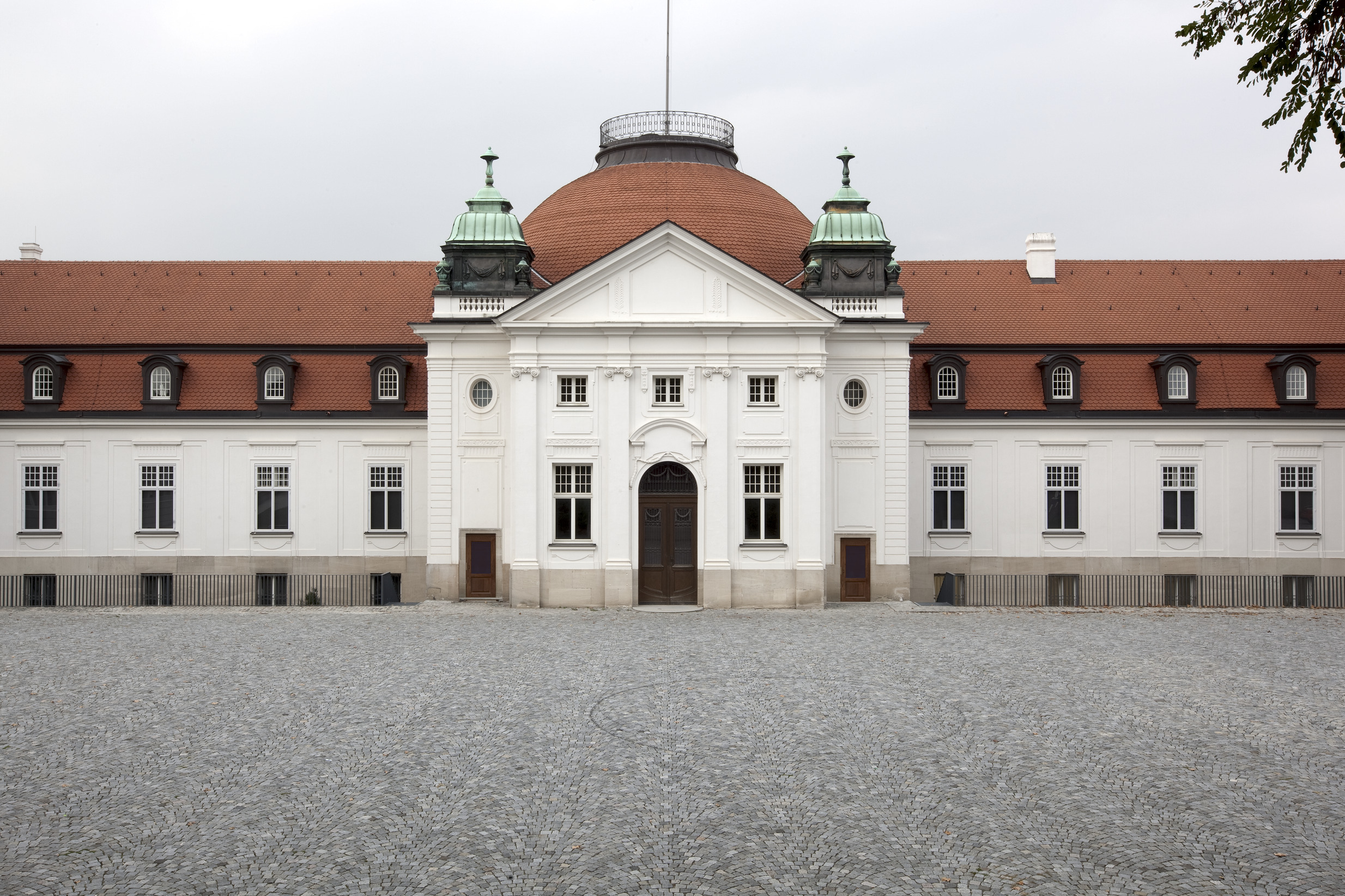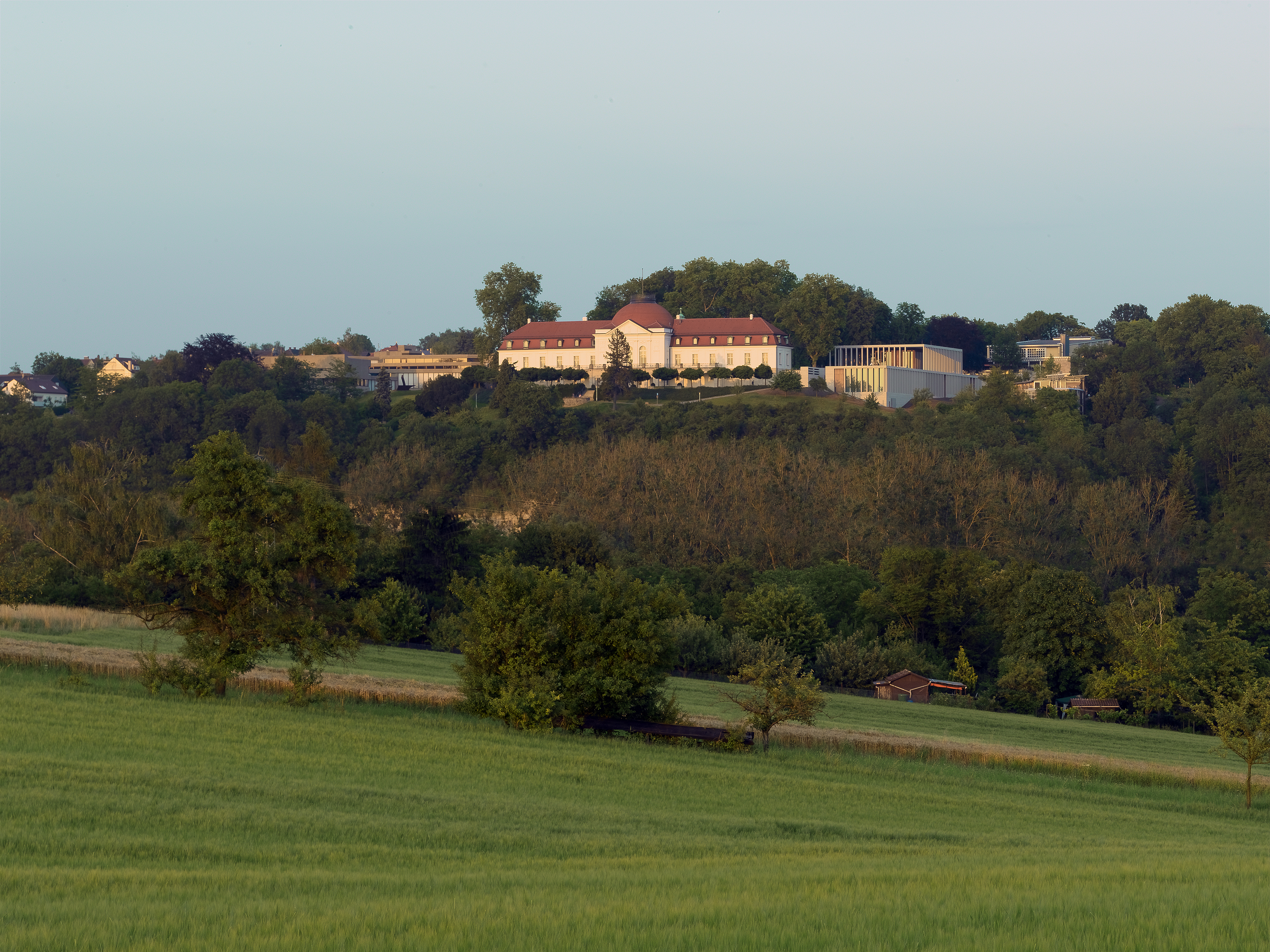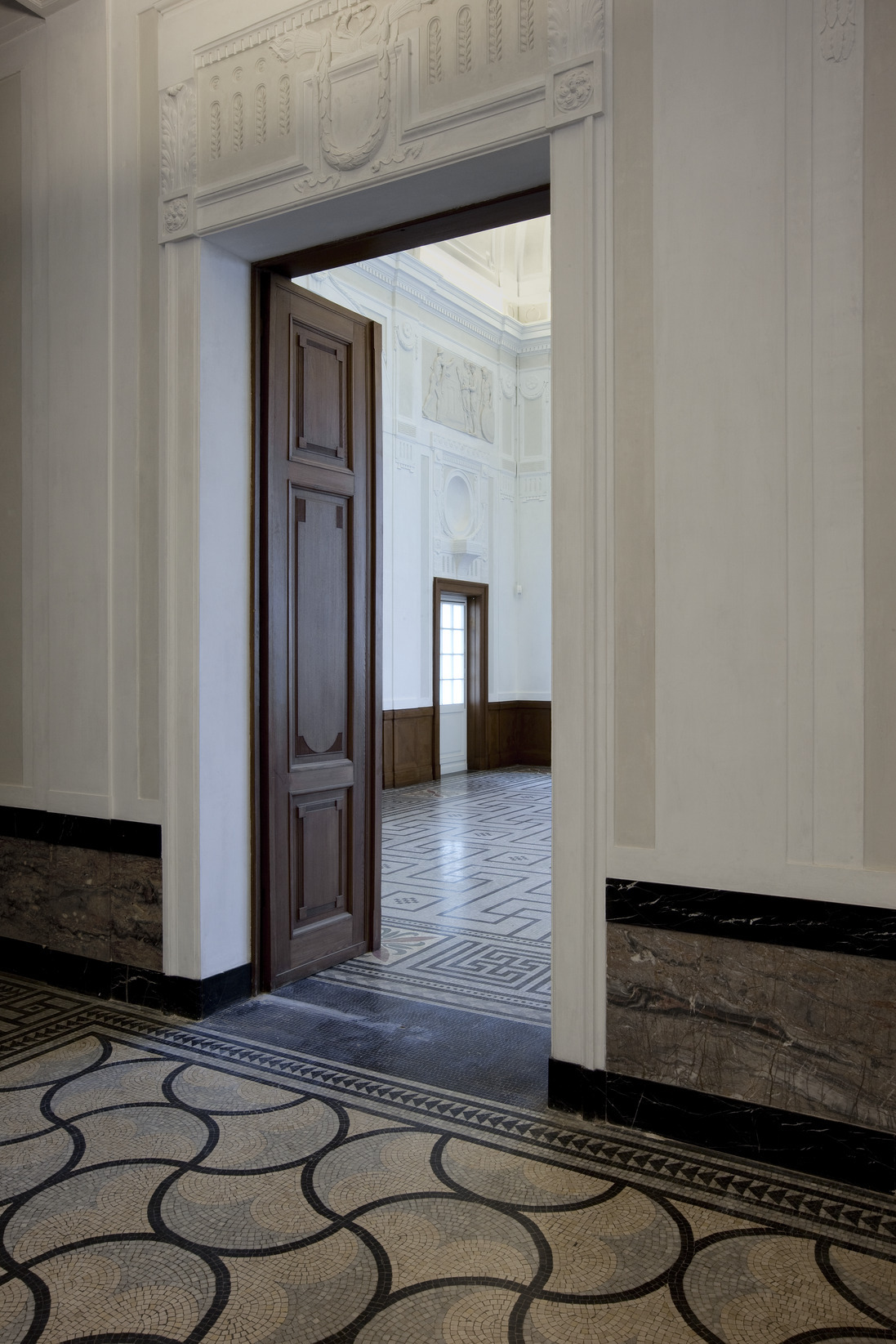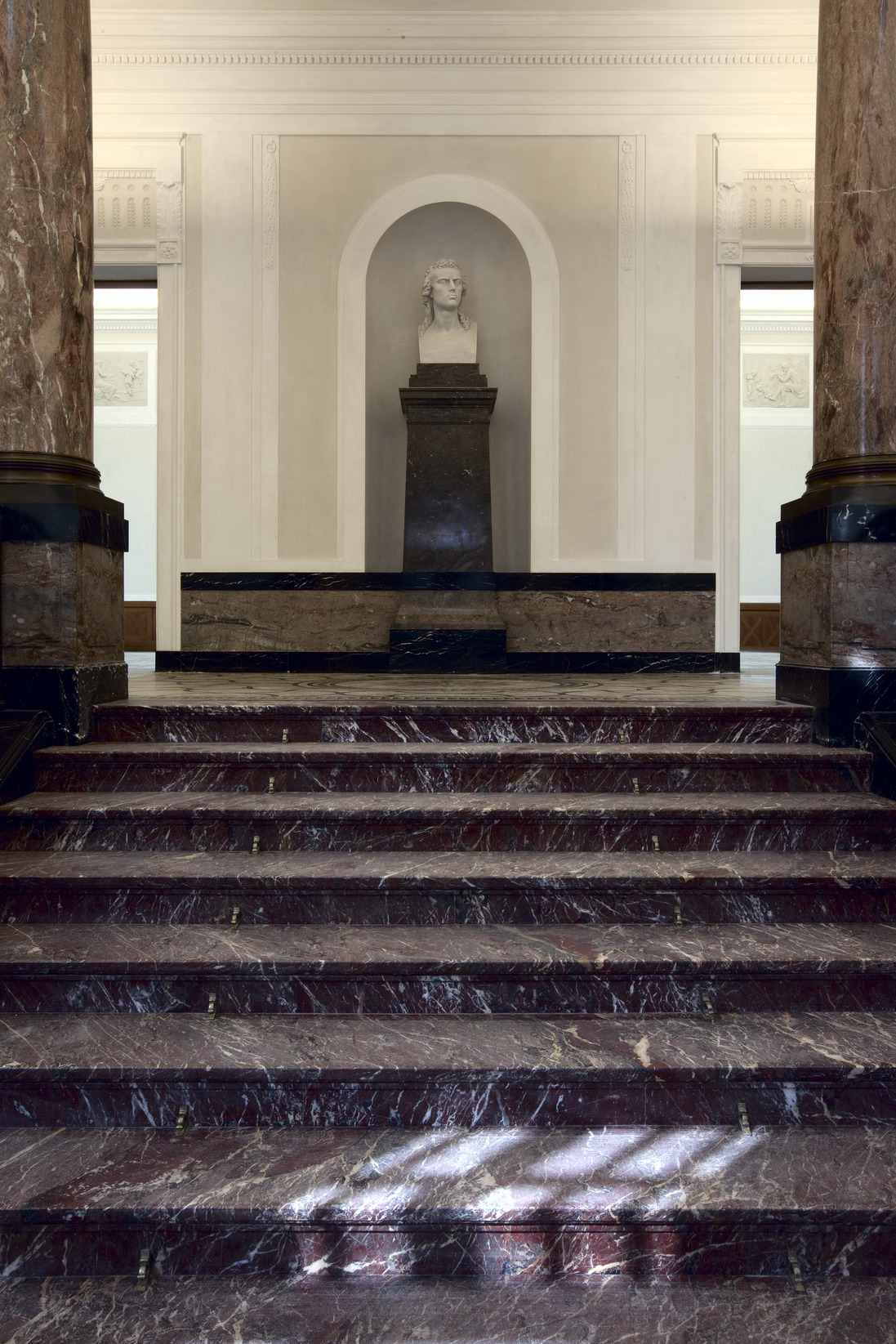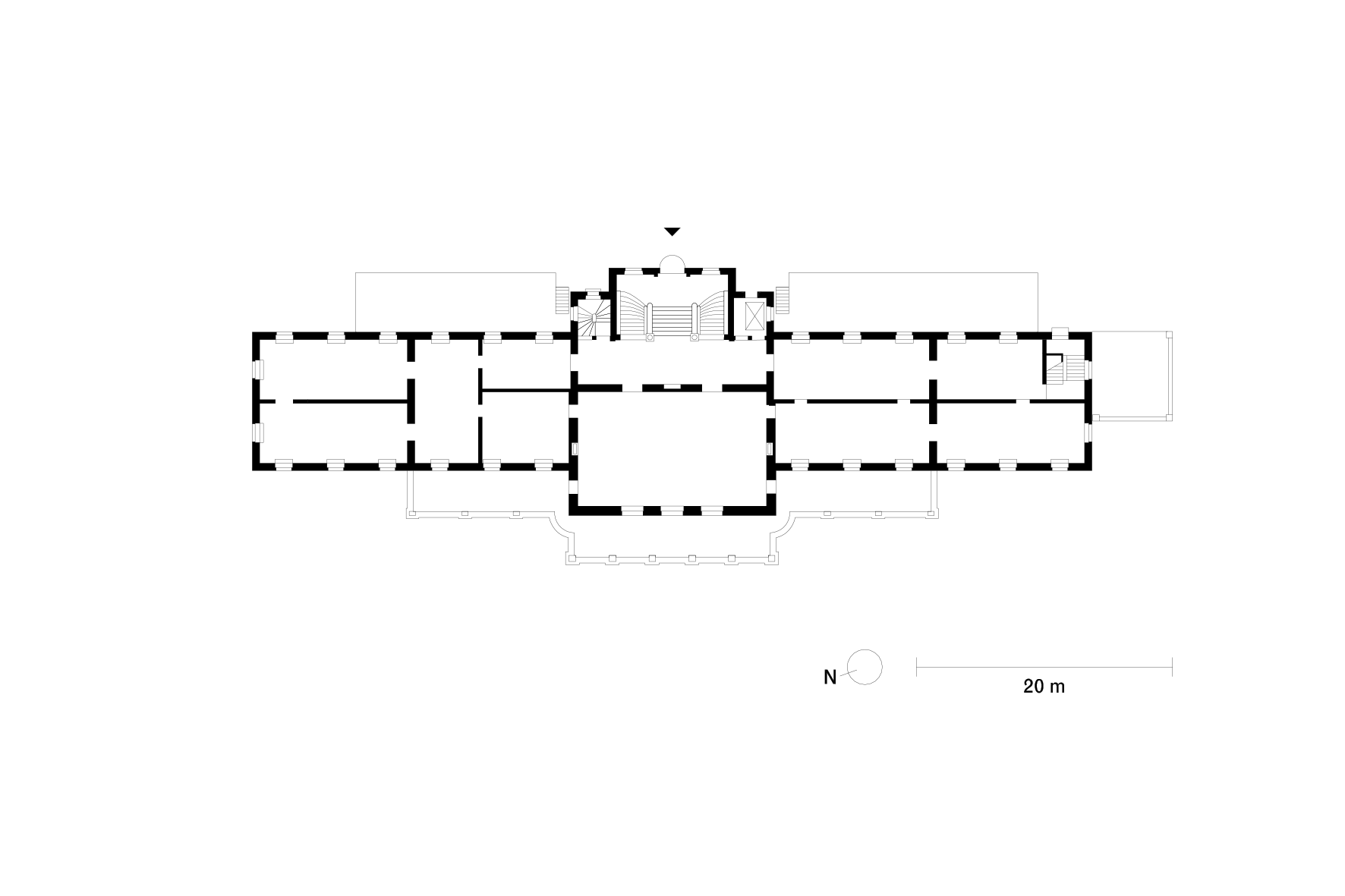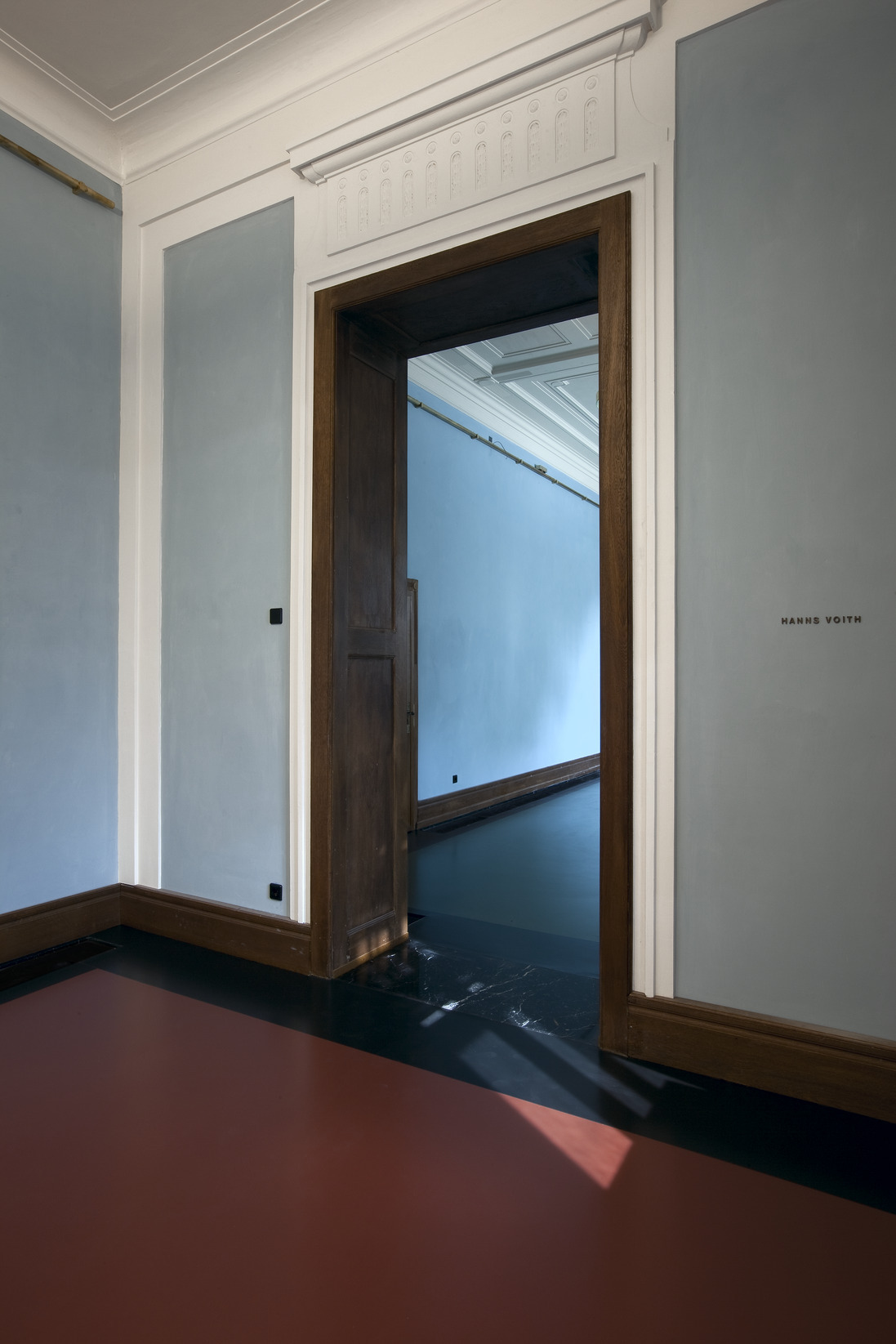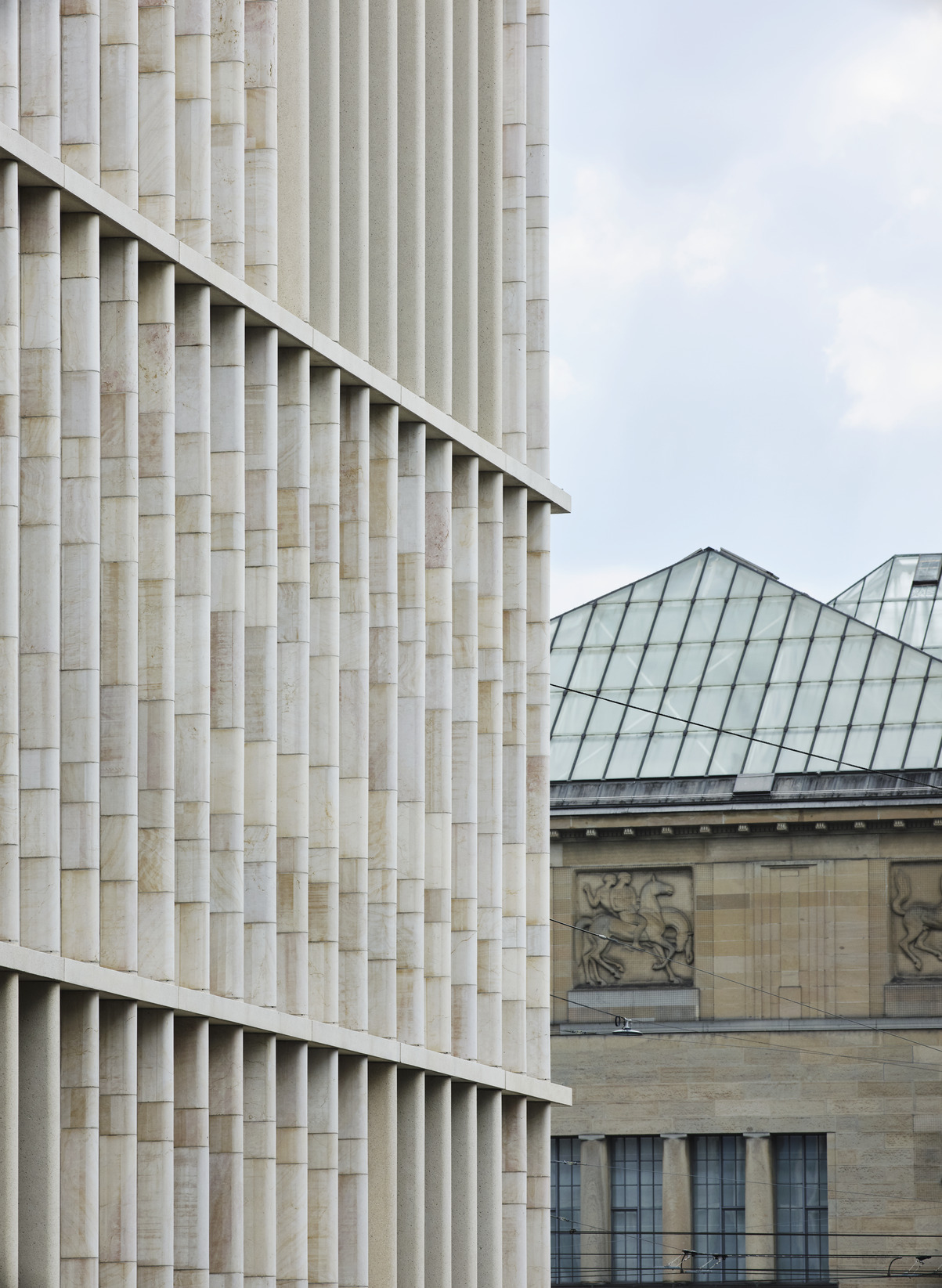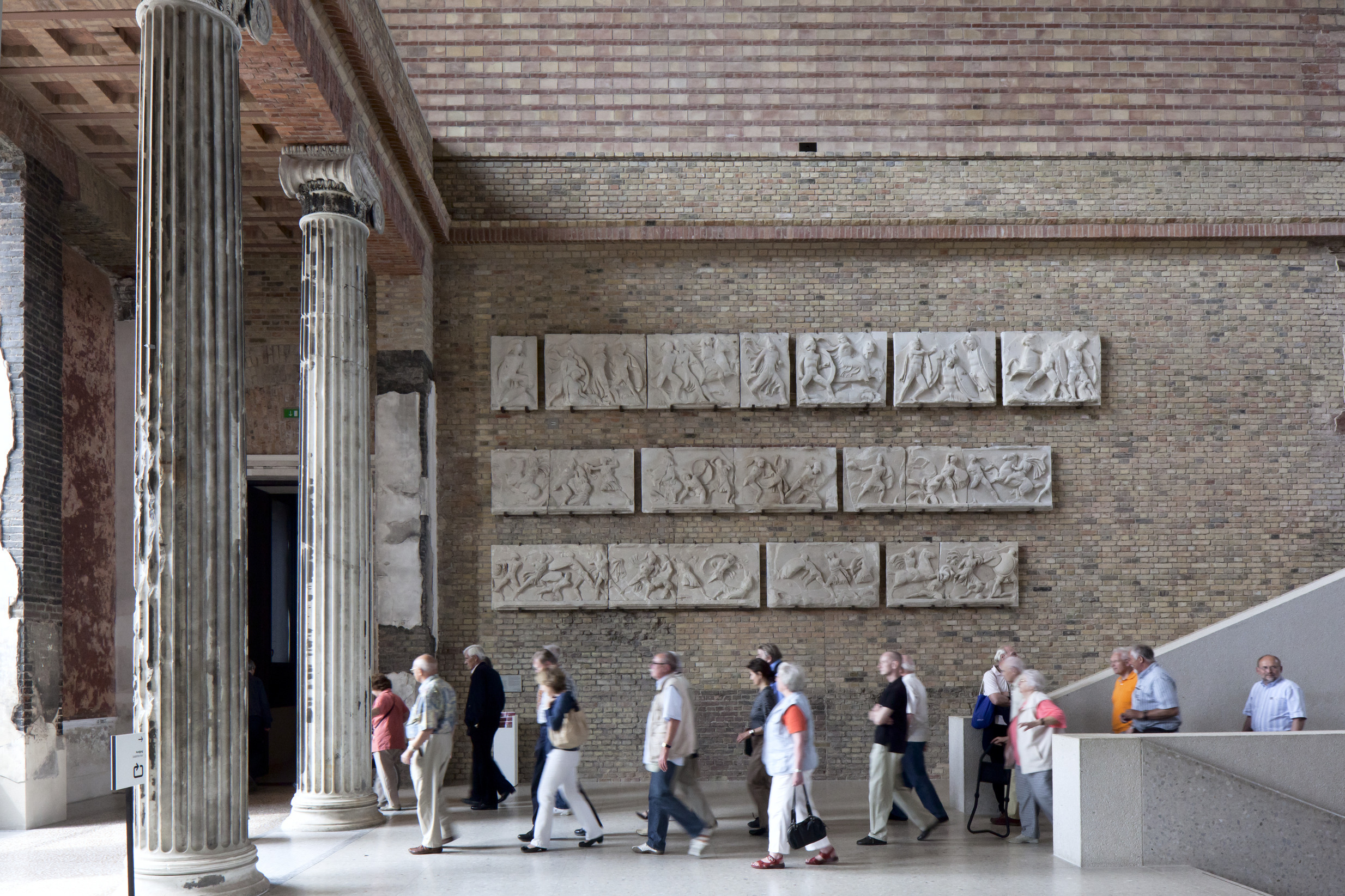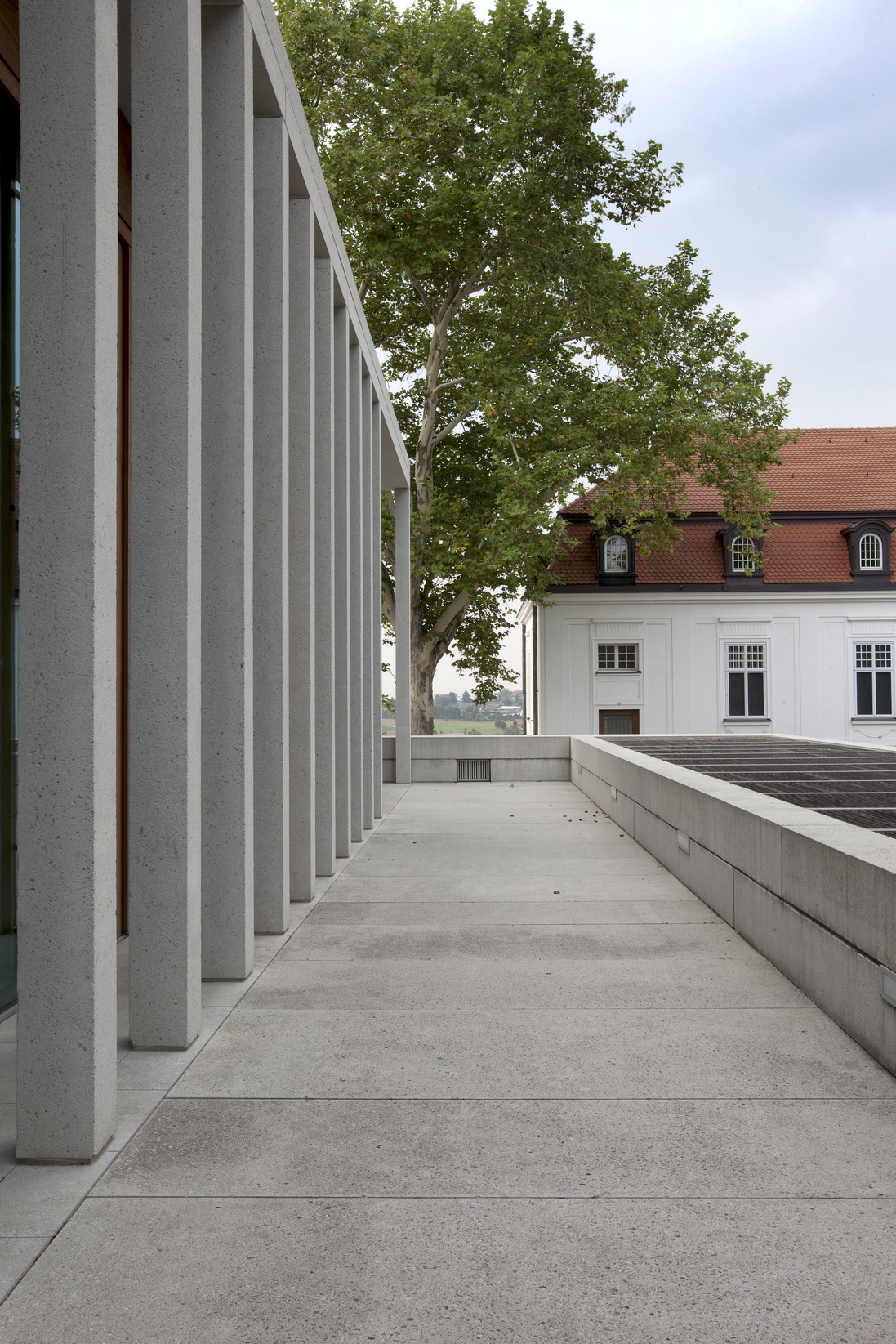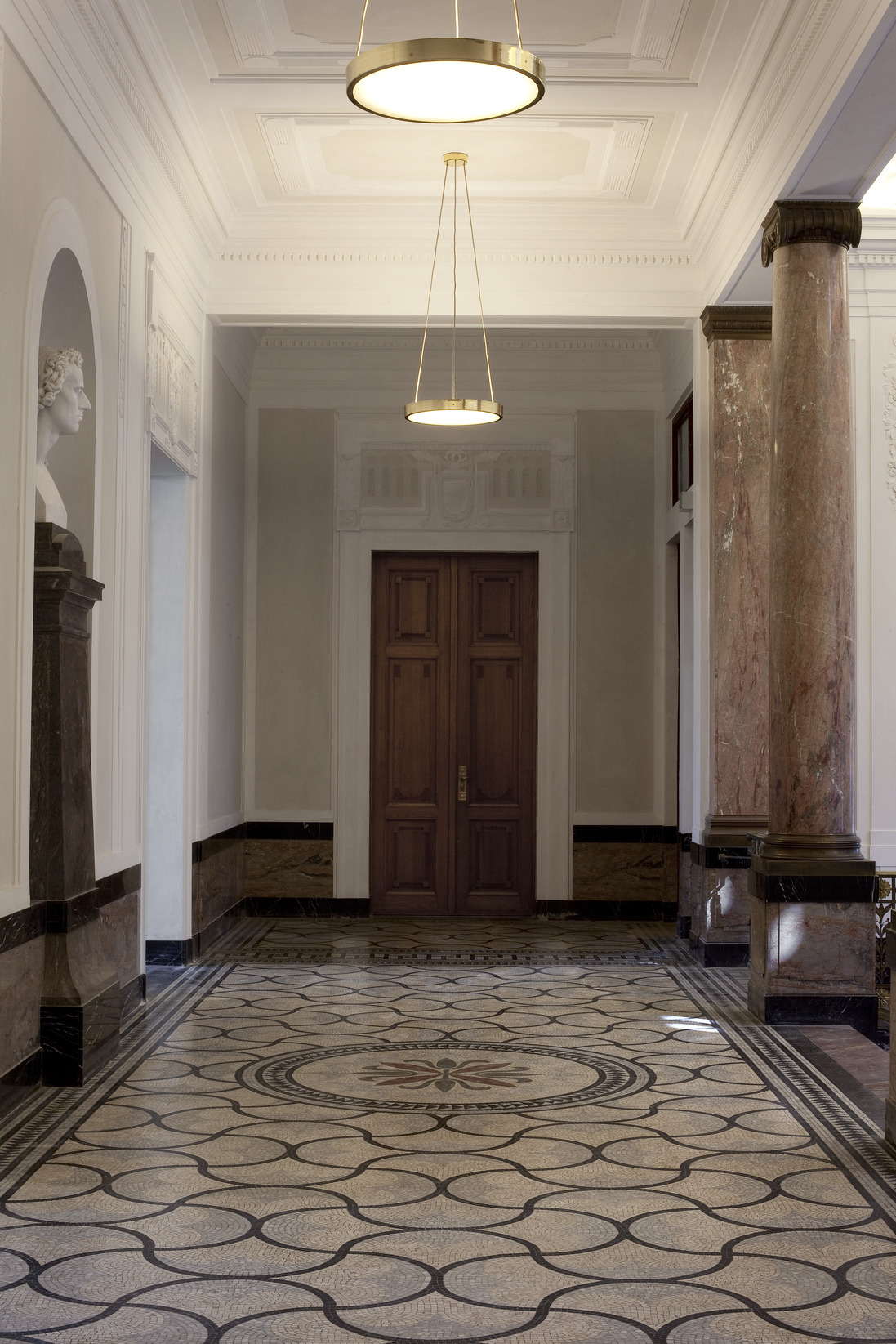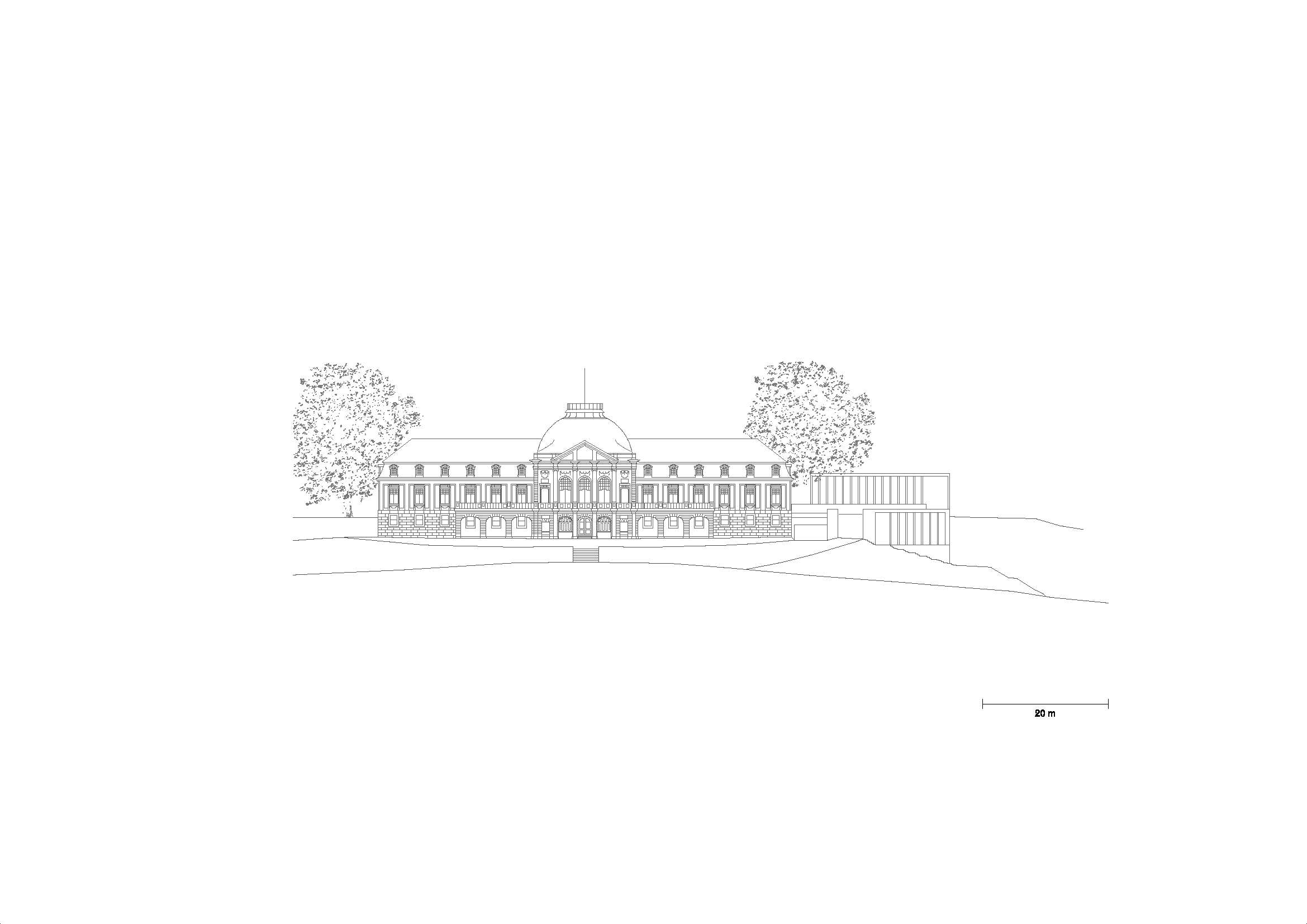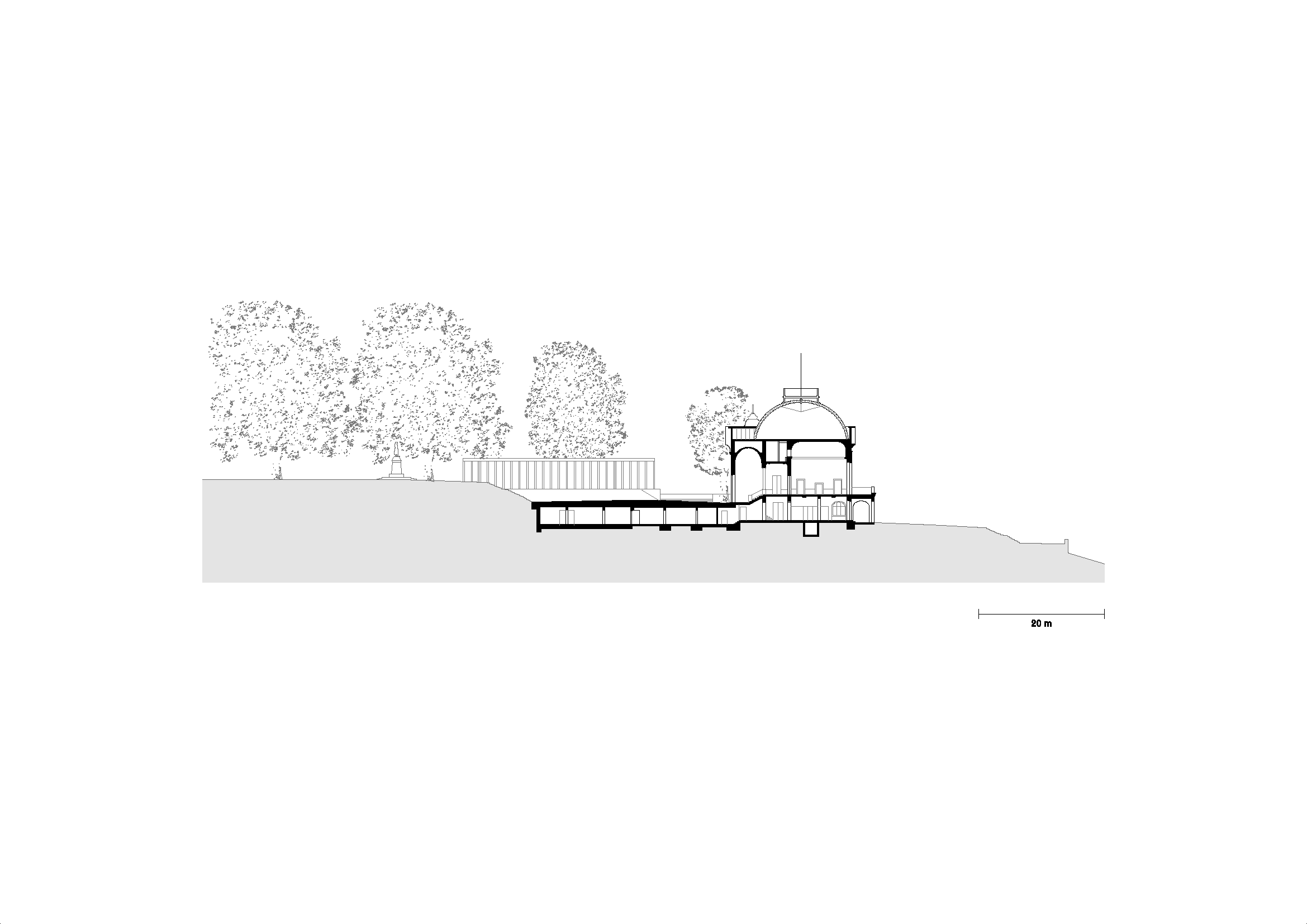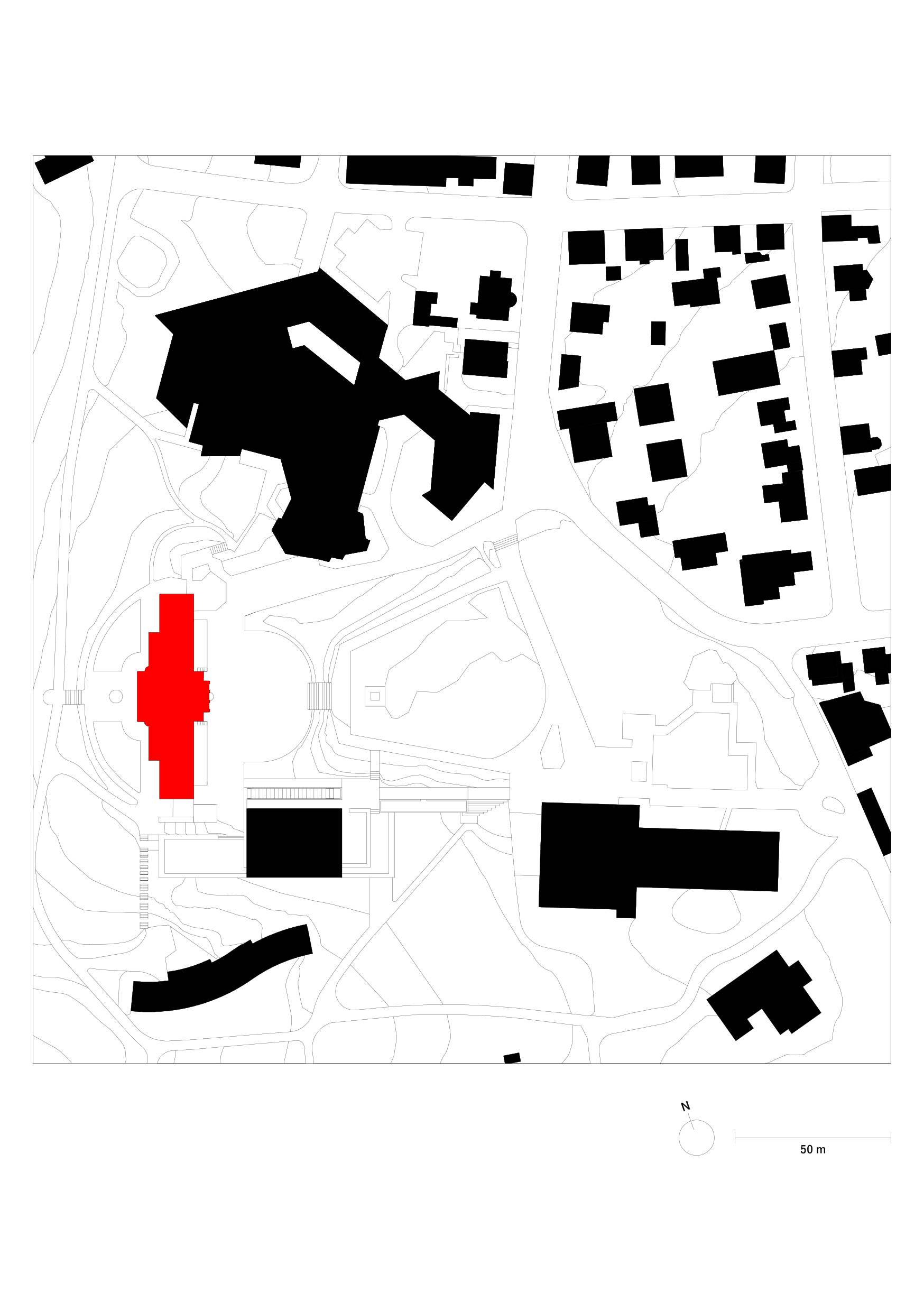Interior restoration Schiller National Museum
Marbach am Neckar, Germany
2006-09
The Schiller National Museum, designed by the architects Ludwig Eisenlohr and Carl Weigle, was completed in 1903 and expanded in 1934 by the city master builder Keim. It is situated on the hills overlooking the Neckar valley and forms an ensemble of buildings together with the German Literature Archive, built in the 1970s, and the Museum of Modern Literature, completed by David Chipperfield Architects Berlin in 2006.
A registered landmark, the building plays a special architectural role in the group, with its functional and typological overlapping of museum, memorial, archive and library. Dedicated to honouring the memory of Friedrich Schiller, the building stylistically reflects the classical period. Free from war damage and in continuous use since its completion, the historic substance is conserved in several main parts of the building.
The interior modernisation includes the exhibition rooms on the main floor as well as the rooms at the lower level. The attic had already been rebuilt during the modernisation of the roof, the facade and the windows several years previously.
The exhibition rooms on the main floor, which were last redesigned in the 1970s, have been brought up to date in terms of technical facilities for the presentation of original exhibits. To better reflect the existing structural conditions of the building, the carpet was removed and replaced with coloured linoleum. Keeping in mind the original surviving building parts, the rooms were repainted and now present a succession of rooms in the style typical of the Weimar classic period. The largely conserved axis of the house with the vestibule, stairwell and Schiller hall form the heart of the museum. During restoration the white emulsion paint covering the stuccoed walls and ceiling was carefully removed and the exposed remains of the polychrome layer were carefully touched up.
Data and credits
- Project start
- 2006
- Construction start
- 2008
- Completion
- 2009
- Opening
- 2009
- Gross floor area
- 2,300 m²
- Client
- Deutsche Schillergesellschaft e.V.
- User
- Deutsches Literaturarchiv Marbach
- Architect
- David Chipperfield Architects Berlin
- Partners
- David Chipperfield, Harald Müller, Alexander Schwarz (Design lead)
- Project architect
- Barbara Koller (Concept design to developed design), Martina Betzold (Technical design, Site design supervision)
- Project team
- Wolfgang Baumeister, Marianne Akay-Arslantepe, Hjördis Klein, Cyril Kriwan
- In collaboration with
- Matthias Weccard, Freier Architekt, Marbach (Construction supervision)
- Quantity surveyor
- Wenzel + Wenzel Freie Architekten, Karlsruhe; Matthias Weccard, Freier Architekt, Marbach
- Structural engineer
- IGB Ingenieurgruppe Bauen, Karlsruhe
- Services engineer
- Jaeger, Mornhinweg + Partner Ingenieurgesellschaft, Stuttgart; Ibb Burrer + Deuring Ingenieurbüro GmbH, Ludwigsburg
- Building physics
- Müller-BBM GmbH, Berlin
- Exhibition planning
- Arbeitsgemeinschaft KS4, Stuttgart; Space 4, Stuttgart; Grafikkooperation Diethard Keppler & Stefan Schmid, Marbach/Stuttgart
- Photography
- Christian Richters, Ute Zscharnt
